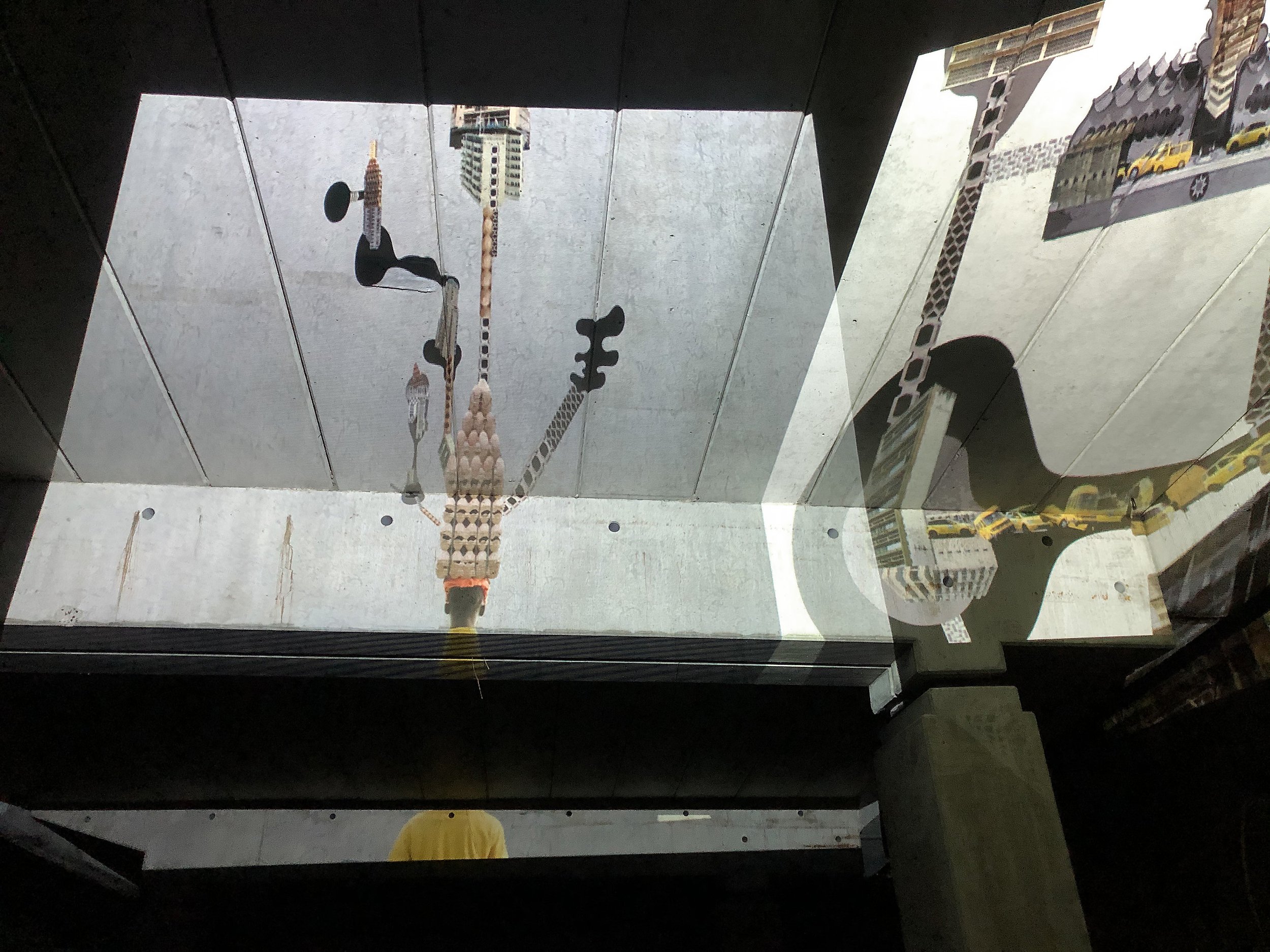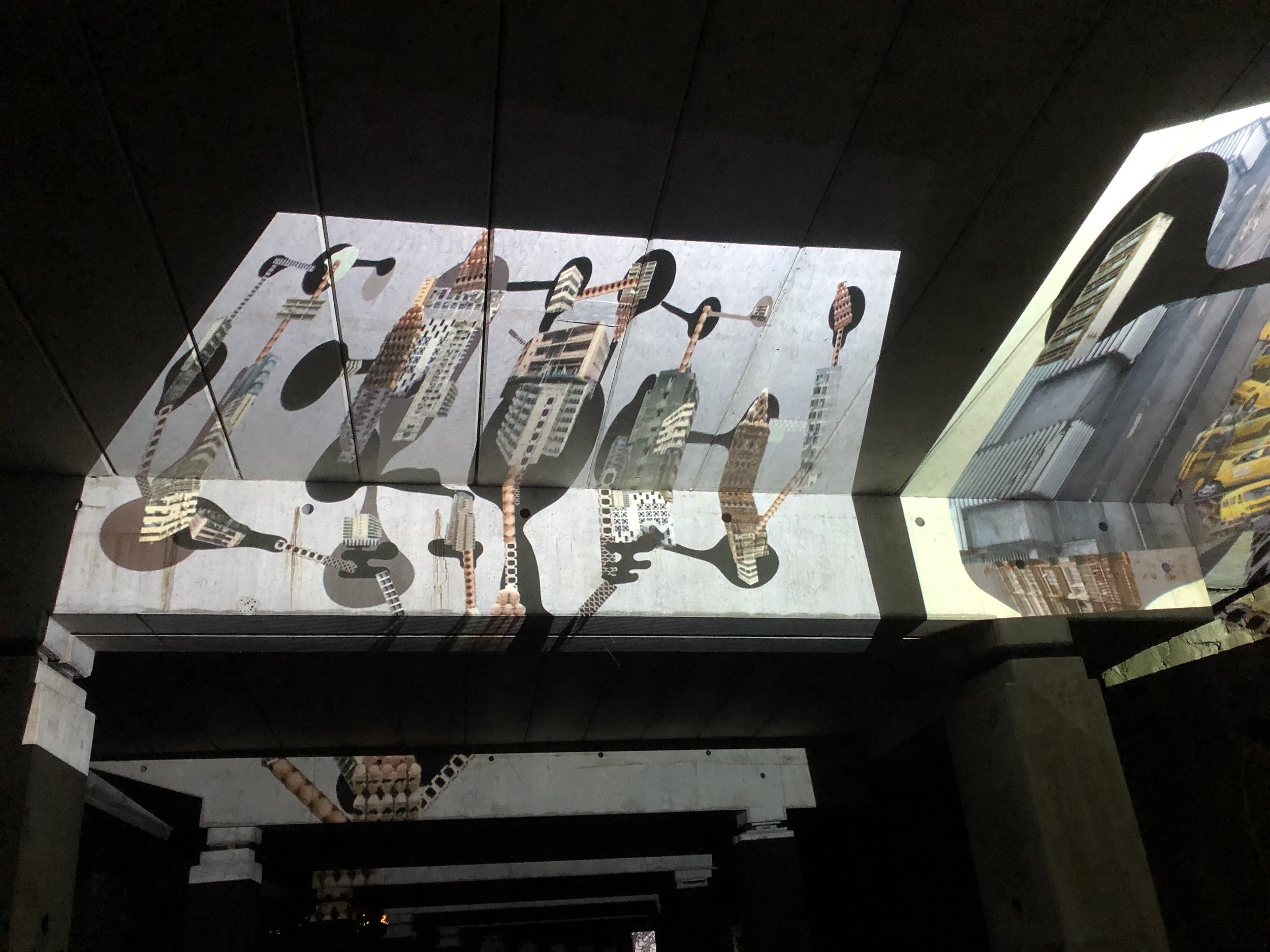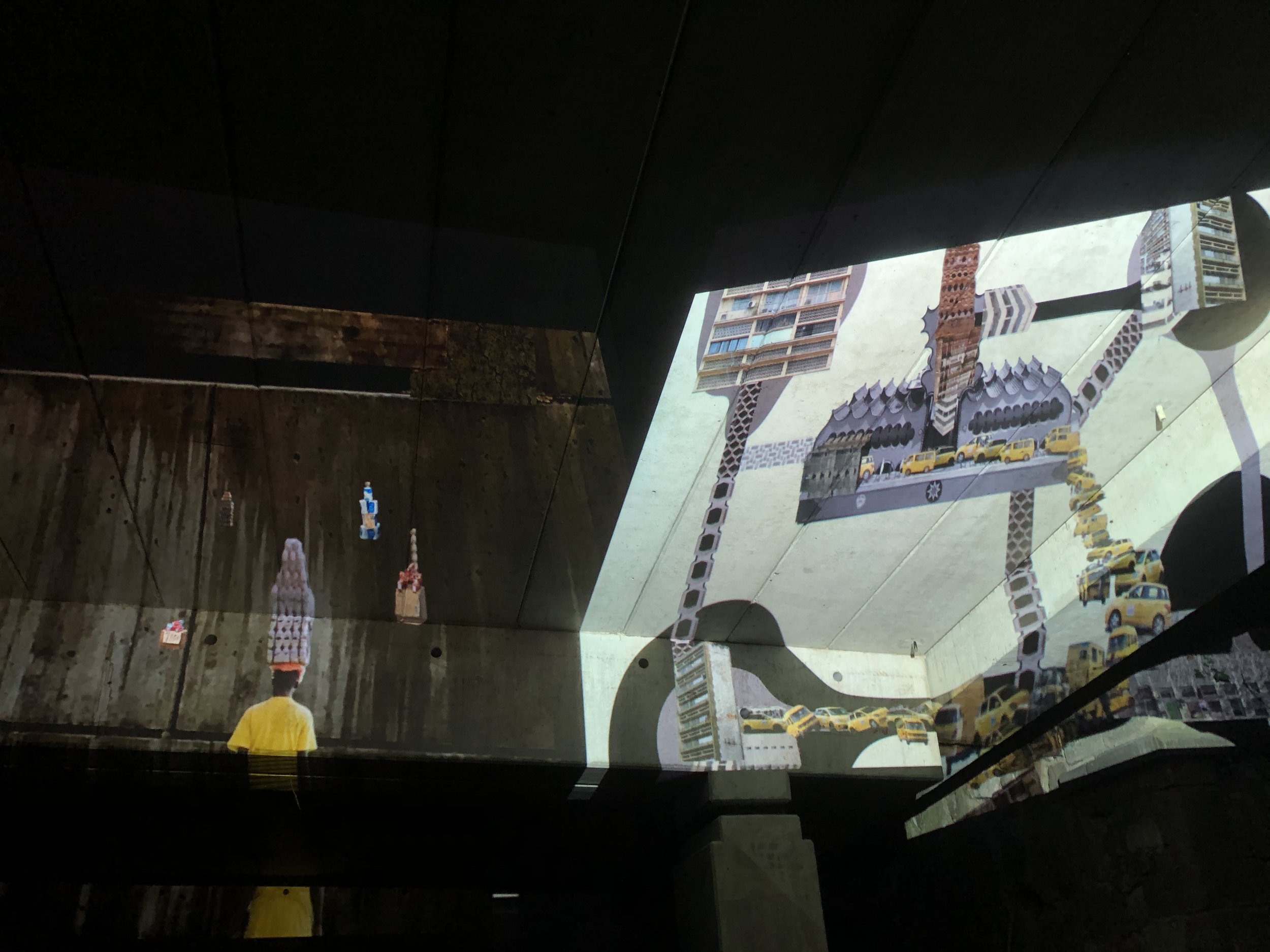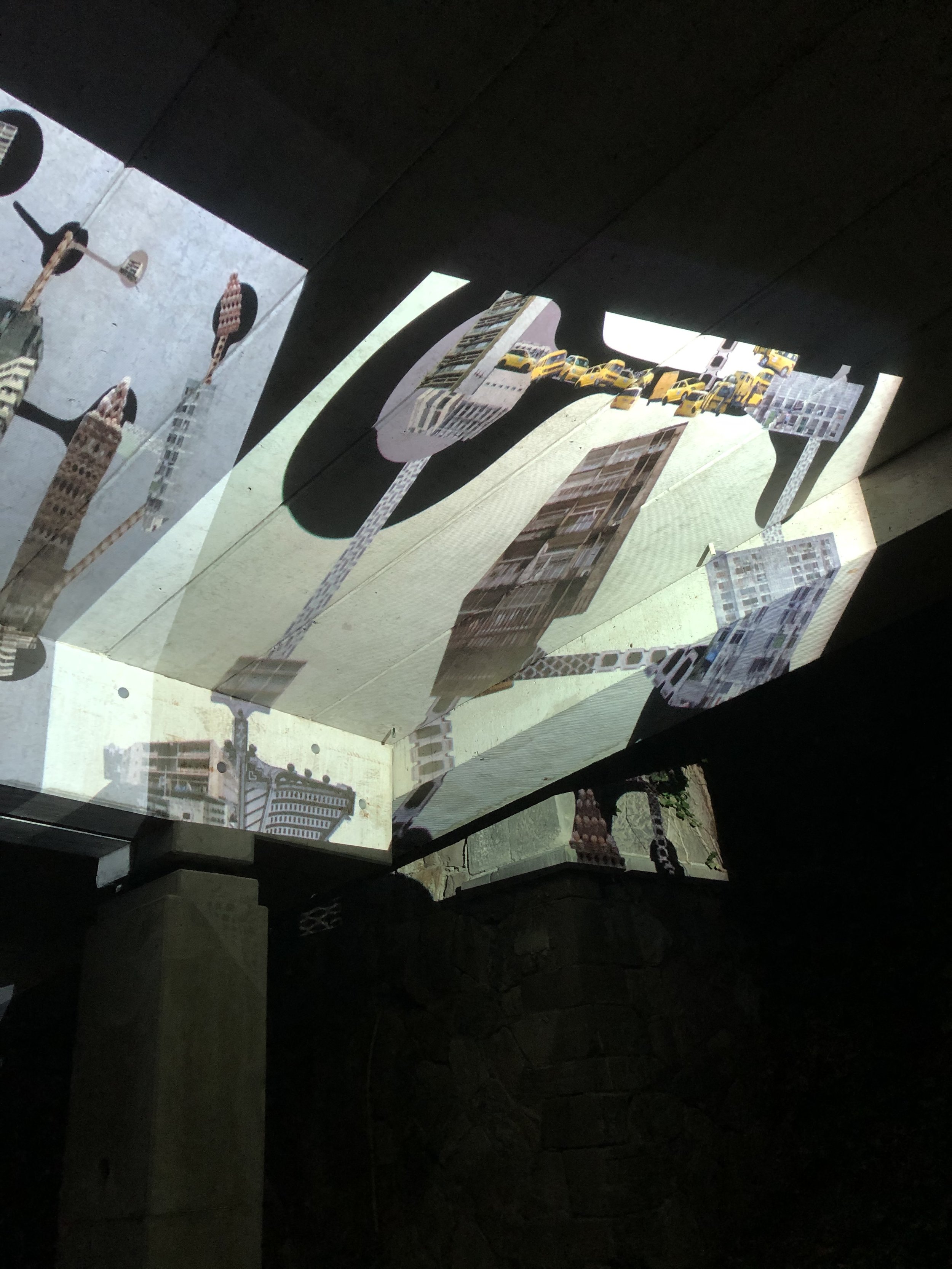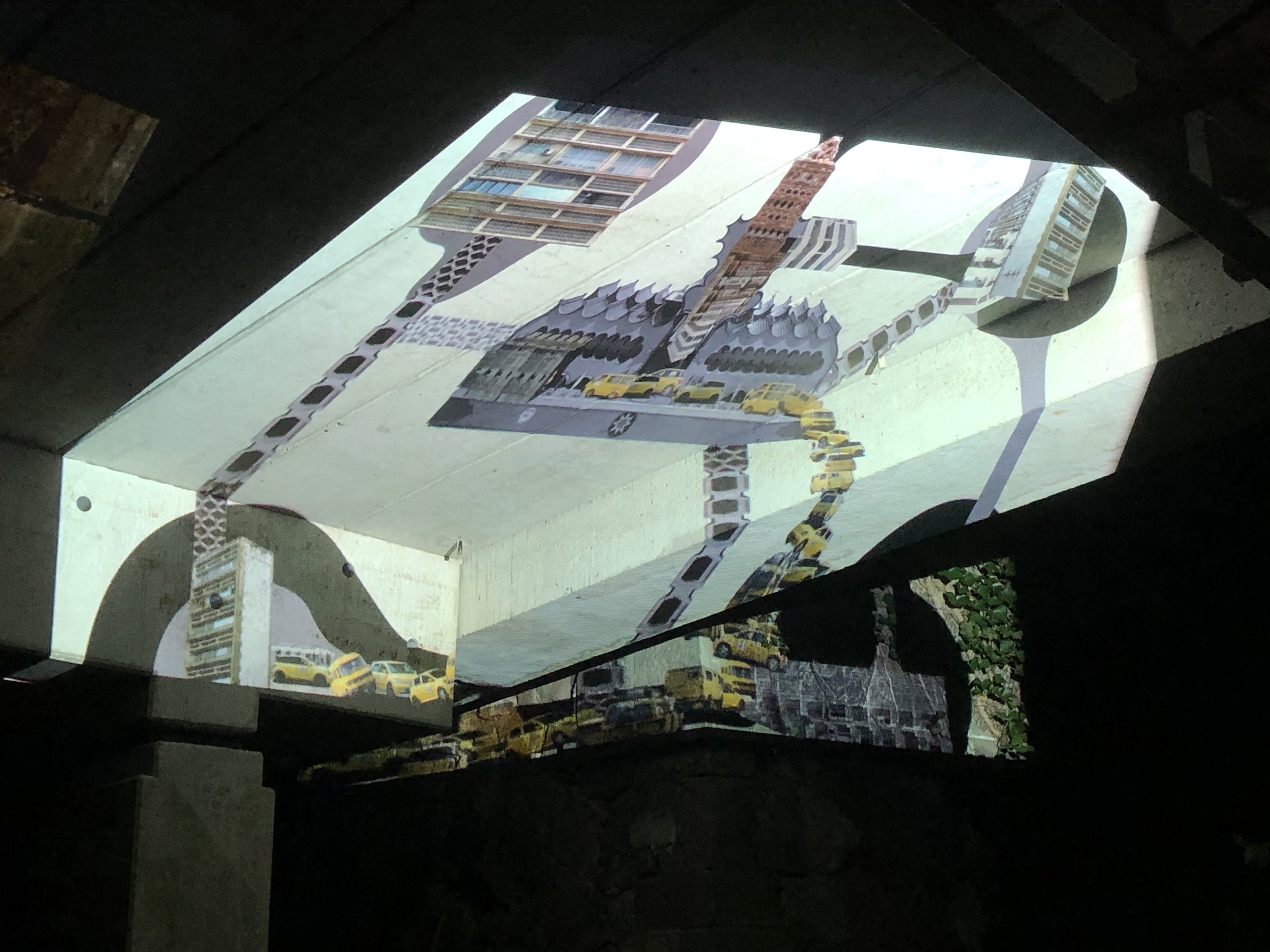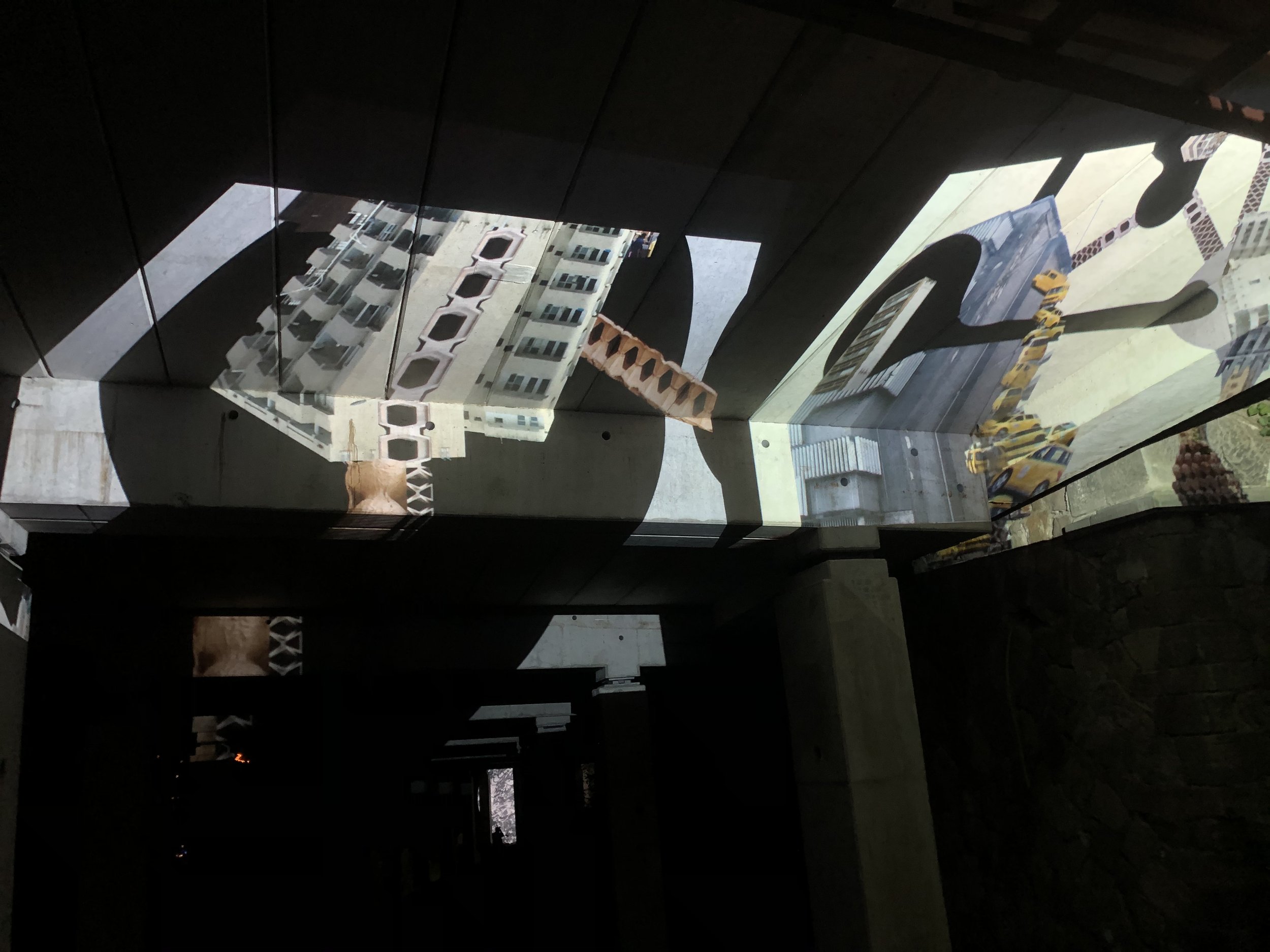“Ville Fantôme: From Utopia To The Present” at the Congo Biennale
Ville Fantôme and Vertical City, 2019. Two-channel video installation at the Congo Biennale. Photo ©Henrik Langsdorf
Henrik Langsdorf: “Ville Fantôme/Kinshasa La Belle”, 2019
In this multi-channel video installation the utopian architectural vision of Congolese artist Bodys Isek Kingelez (1948–2015) meets with Henrik Langsdorf’s visual reflections on urbanism in present-day Kinshasa in the form of animation and collage.
Kingelez, who remains largely unknown in the Democratic Republic of the Congo despite international acclaim, became known for his “extrème maquettes”, extremely colorful architectural models that promise a bright future not only for Kinshasa and other places in his native country, but the world at large.
What if some of his structures had actually been built? How might this wildly beautiful wonderland where “delinquents, police and prisons do not exist” — as Kingelez proposed in an artist statement about his “Projet pour le Kinshasa du Troisième Millénaire”, — have fared two decades into this Third Millennium?” These are the questions Langsdorf explores in “Ville Fantôme/Kinshasa La Belle”.
Bodys Isek Kingelez: Ville Fantôme, 1996. Photo ©Henrik Langsdorf
Henrik Langsdorf: “Ville Fantôme/Kinshasa La Belle”, 2019
Chika Okeke-Agulu, Princeton University art historian and critic, described Kingelez’ cityscapes as “spectacular architectural form as a counter-narrative to the dystopian realities of Kinshasa”. Langsdorf ventures to reconnect them with these realities.
By stripping the buildings of their exuberant hues, and exposing them to imagined aging and decay, he adapts them to the largely monochromatic aesthetic of his own “metabolist collages”, which feature grimy brutalist buildings of the kind found in present-day Kinshasa.
“I have always been fascinated by utopian ideas in architecture, and seeing Kingelez’ retrospective at the MoMA in New York in 2018 was extremely exhilarating and touching. But I’m equally drawn to the urban decay and bleakness that grand architectural dreams often leave in their wake, and how people in an urban context deal with them”, says Langsdorf, “which compelled me to make these videos.”
“Ville Fantôme/Kinshasa La Belle”, a nine-minute animated video, opens with a black and white view of Kingelez’ “Ville Fantôme”. The only person populating the vast boulevards is a street vendor who balances a stack of egg cartons on his head. As the camera zooms in, a tree-like city emerges from the egg cartons.
“Ville Fantôme/Kinshasa La Belle” and “Vertical City” at Light Installations at the Weinberg, Kassel (Germany), 2021
Henrik Langsdorf: “Ville Fantôme/Kinshasa La Belle” II, 2019
In the second part of the video entitled “Kinshasa La Belle”, Langsdorf invokes aerial footage of cities destroyed during World War II as a way of confronting these unabashedly cheerful cityscapes with the grim history of the Democratic Republic of the Congo, which has endured a war that claimed over 5 million lives and has been largely ignored by the Western world. In the ensuing scene that shows a collage of rapidly growing abstract shapes combined with actual Kinshasa buildings, he comments on the uncontrolled growth that this city of over 17 million has been experiencing for the last few decades.
The videos are accompanied by a sound mesh of Kinshasa street noise.
“Vertical City”, a two-minute animated loop, features some of Kingelez’ buildings woven into a proliferation of plant-like shapes that, instead of buds and blossoms, bear morsels of existing Kinshasa architecture and play off the notion that dwellings are like living organisms and units are cells, as envisioned by the metabolist architecture movement in Japan in the 1950s and 60s.
In the resulting thicket Langsdorf pays tribute to the people of Kinshasa, who pulse through the ever-congested arteries of this city in packed taxi buses and yellow cabs.
To emphasize the idea of uncontrolled growth, Langsdorf insists that this video is projected onto multiple surfaces, “to create a sense of distortion and fluidity”, as was the case when the work was presented at the Congo Biennale in 2019 and at “Light Installations at the Weinberg” in Kassel, Germany in 2021, where it was projected onto the concrete pillars of a street overpass.
Henrik Langsdorf: “Vertical City”, animated collage. 2019
It is this Congolese ingenuity — the exalted yet controlled grandiosity of Kingelez’ vision and the humble improvisation of the daily struggle of the people of Kinshasa — that Langsdorf seeks to both celebrate and refract through the prism of his dystopian lens.



